Troels Flensted with Jim Biddulph
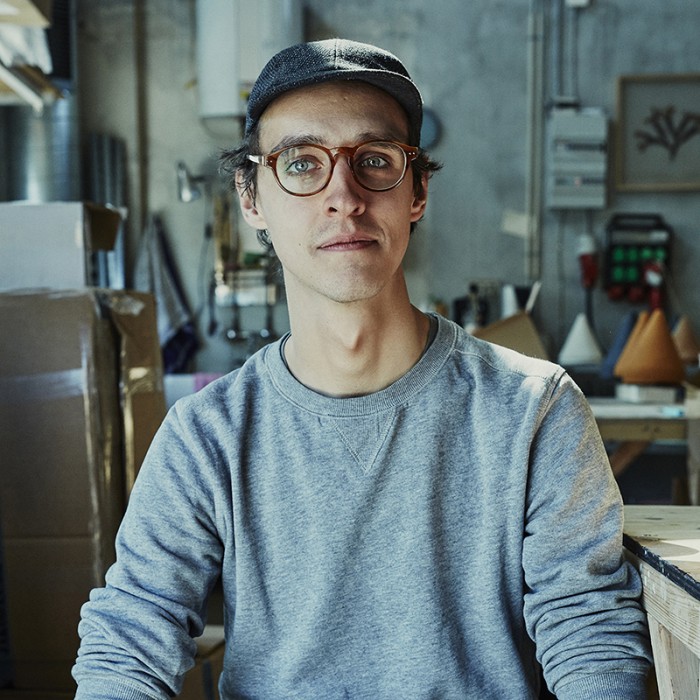
Troels Flensted studio follows in the footsteps of a plethora of design giants to have come out of Denmark since the middle of last century, when an industrial movement blossomed out of the dark post-war slump. There are many traits that we associate with Danish design to this day; industrial processes mixed with high quality craftsmanship, sensitive uses of materials and livable functionality. But whilst the work coming out of the studio carries these customary characteristics there is an experimental edge that sets them apart. This may be, at least in part, due to founder Flensted’s education at London’s School of Central Saint Martins where he graduated in 2014 before moving back to his native home of Copenhagen.
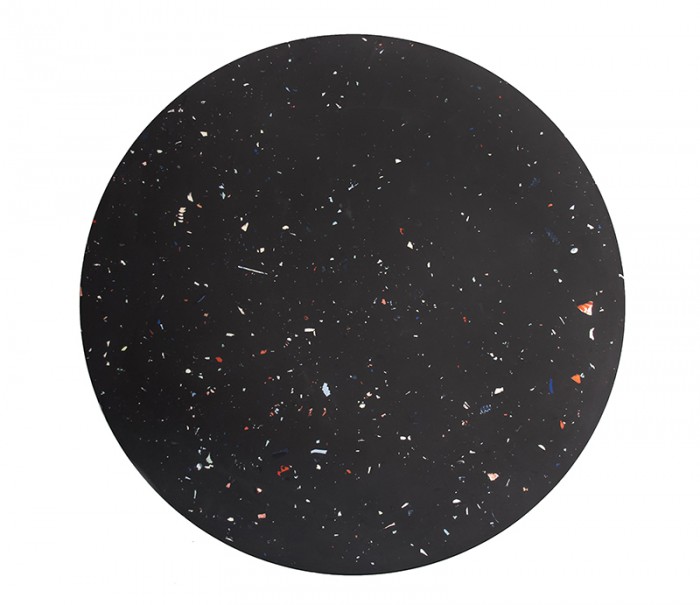
There’s playfulness to the studios collection of furniture and interior surfaces that stems from an experimental approach to materials, colour and process. Flensted himself explains that it’s often their inherent behaviors that he tries to harness and “finds inspiration in the aesthetic and undiscovered possibilities deriving from combining the three.” His first Poured Collection was an investigation into the mineral powder and water-based acrylic polymer composite. Adding small amounts of pigment and a tried and tested pouring technique the resulting pattern “is like a frozen moment, it captures the time of creation and is a very visual expression of how it’s made. It’s a story of every movement you make when you’re casting.”
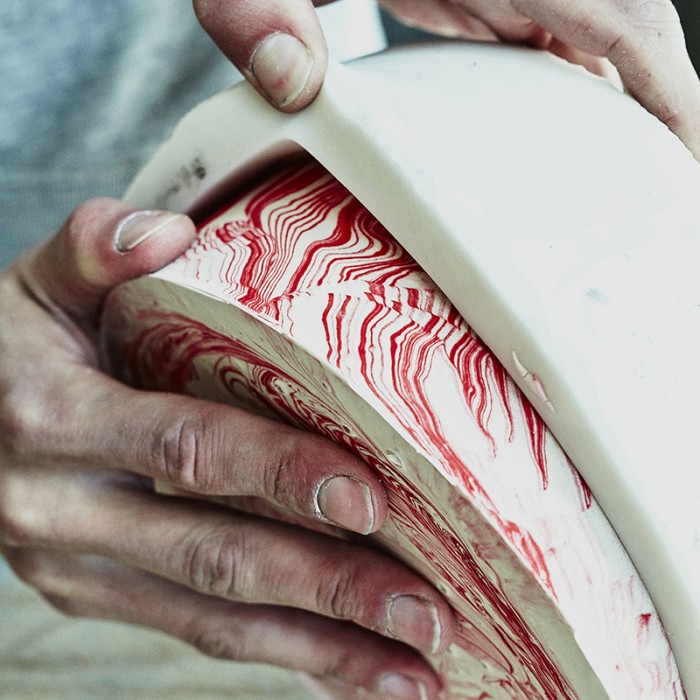
“It’s a story of every movement you make when you’re casting.”
More recent collections explore other singular materials with the same inquisitive approach. Perception transforms mirror-polished stainless steel through the introduction of carefully applied heat. Picking up upon the unique characteristics of the material Flensted applies a flame to the edges of the round mirrors by hand. The natural phenomenon of changing colour alters the aesthetic of the mirror, as does a shift in the reflective qualities. When viewed up close ones reflection appears normal but step away and the world becomes a much more warped place. As Flensted explains, “By highlighting the unique qualities of the material, I’ve made a collection which creates colourful new perceptions of yourself and your surroundings.”
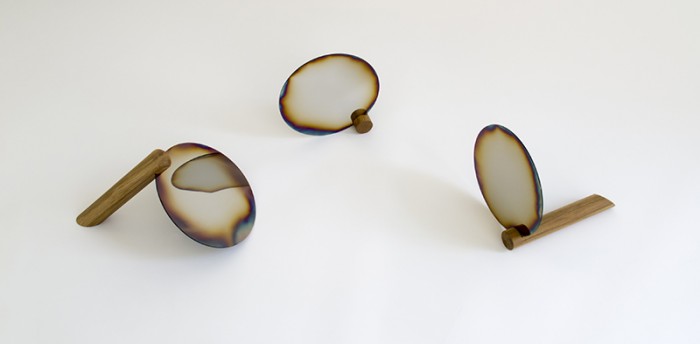
His newest collection Ember is another that uses the transformative potential of open flames whilst also recycling a surplus material leftover from another Danish brand, Dinesen’s manufacturing process. Famed for their enormously wide planks of Douglas fir, as seen across the floors of the Saatchi gallery here in the UK, pieces of waste wood are still created during the engineering of the timber. Having collected and saved the wood from ending up on fires across Denmark Flensted transforms them through a series of traditional craft processes. Gluing together layers of the wood, which are then shaped on a lathe, produces the conical tables within the collection.
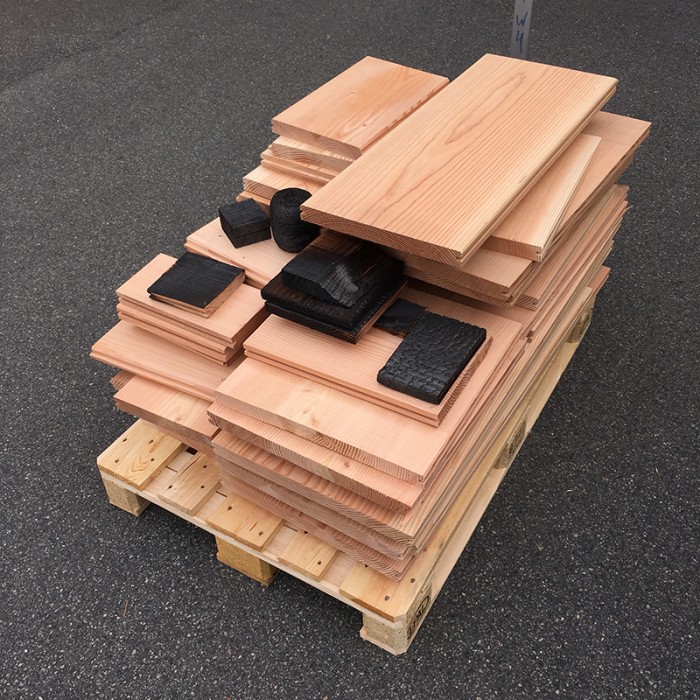
The minimal form is deliberately understated, allowing for the characteristics of the material to shine. Each piece of wood is carefully considered for its unique grain, and with good reason. As well as the patternation of the lines on the surface, the internal structure itself is also integral in producing the collection. Together with woodturning company Brdr. Krüger, Flensted playfully experimented with Shou Sugi Ban, a traditional process that uses charring as a natural treatment to prolong the life of wood normally used as exterior cladding. The richly blackened lumps of timber sit in typically simple but effective metal frames whilst the soon-to-be surface panels will offer clients the chance to bring this rugged outdoor material into 21st century interior spaces.
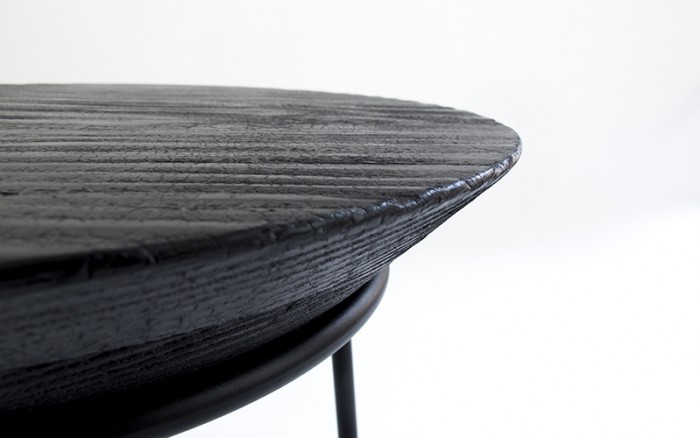
For more information about Troels Flensted’s work and to find out more about the launch of the Ember Surfaces checkout the website here.




